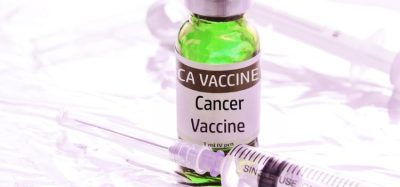Herd immunity is an impractical COVID-19 mitigation strategy, says study
Posted: 23 September 2020 | Hannah Balfour (European Pharmaceutical Review) | No comments yet
Researchers who designed a transmission model for COVID-19 demonstrated that attempting to establish herd immunity against COVID-19 would be too challenging.


New research suggests that achieving herd immunity to COVID-19 is an impractical public health strategy. The researchers suggest that the idea of ‘mitigating’ the disruption of COVID-19 by achieving herd immunity would require constant changes to lockdown measures, making it too challenging to achieve.
The study was based on a new model developed by University of Georgia, US, scientists, who said that the two major schools of thought when it comes to preventing health care infrastructure becoming overwhelmed, while avoiding major societal disruption are:
- suppression, in which communities implement drastic social distancing measures to eliminate transmission; and
- mitigation, a strategy which aims to achieve herd immunity by permitting the infection of a sufficiently large proportion of the population while not exceeding health care capacity.
“The herd immunity concept is tantalising because it spells the end of the threat of COVID-19,” said Toby Brett, a postdoctoral associate at University of Georgia’s Center for the Ecology of Infectious Diseases, US, and the study’s lead author. “However, because this approach aims to avoid disease elimination, it would need a constant adjustment of lockdown measures to ensure enough, but not too many, people are being infected at a particular point in time. Because of these challenges, the herd immunity strategy is actually more like attempting to walk a barely visible tightrope.”
In their study, Brett and Pejman Rohani developed a model to investigate the suppression and mitigation approaches for controlling the spread of SARS-CoV-2, the virus that causes COVID-19. Unlike other similar studies, Brett and Rohani sought to determine if and how countries could achieve herd immunity without overwhelming the health care system and to define the control efforts that would be required to do so.
Their age-stratified disease transmission model simulated SARS-CoV-2 transmission in the UK, with spread controlled by the self-isolation of symptomatic individuals and various levels of social distancing.
In their simulations, the pair observed that in the absence of any control measures the UK would experience as many as 410,000 deaths related to COVID-19, with 350,000 of those being from individuals aged 60 and over. They demonstrated that using the suppression strategy, far fewer fatalities were predicted: 62,000 among individuals aged <60 and 43,000 among individuals under 60.
Their model also indicated that if self-isolation engagement is high (defined as at least 70 percent reduction in transmission), suppression could be achieved in two months regardless of social distancing measures and potentially sooner should school, work and social gathering places close.


When examining strategies that seek to build herd immunity through mitigation, their model found that if social distancing is maintained at a fixed level, hospital capacity would need to greatly increase to prevent the health care system from being overburdened. To achieve herd immunity given currently available hospital resources, the UK would need to adjust levels of social distancing in real time to ensure that the number of sick individuals is equal to, but not beyond, hospital capacity. If the virus spreads too quickly, hospitals would be overwhelmed, but if it spreads too slowly, the epidemic would be suppressed without achieving herd immunity.
Brett and Rohani noted that much is unknown about the nature, duration and effectiveness of COVID-19 immunity and that their model assumes perfect long-lasting immunity. They cautioned that if immunity is not long-lasting, and there is a significant chance of reinfection, achieving herd immunity through widespread exposure is very unlikely.
“We recognise there remains much for us to learn about COVID-19 transmission and immunity, but believe that such modelling can be invaluable in so-called ‘situational analyses,'” said Rohani. “Models allow stakeholders to think through the consequences of alternative courses of action.”
The study was published in PNAS.
Related topics
Related organisations
University of Georgia's Center for the Ecology of Infectious Diseases









